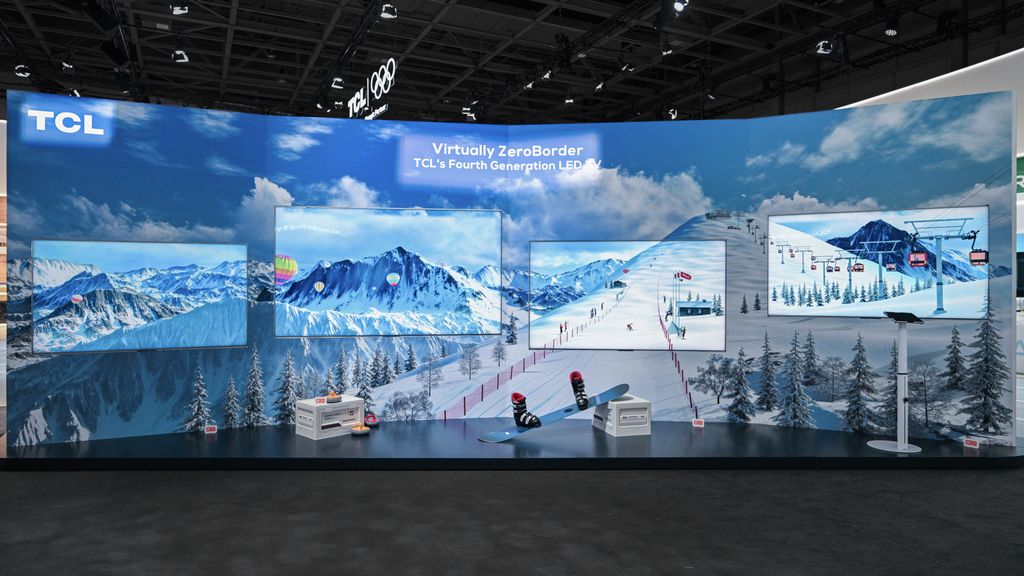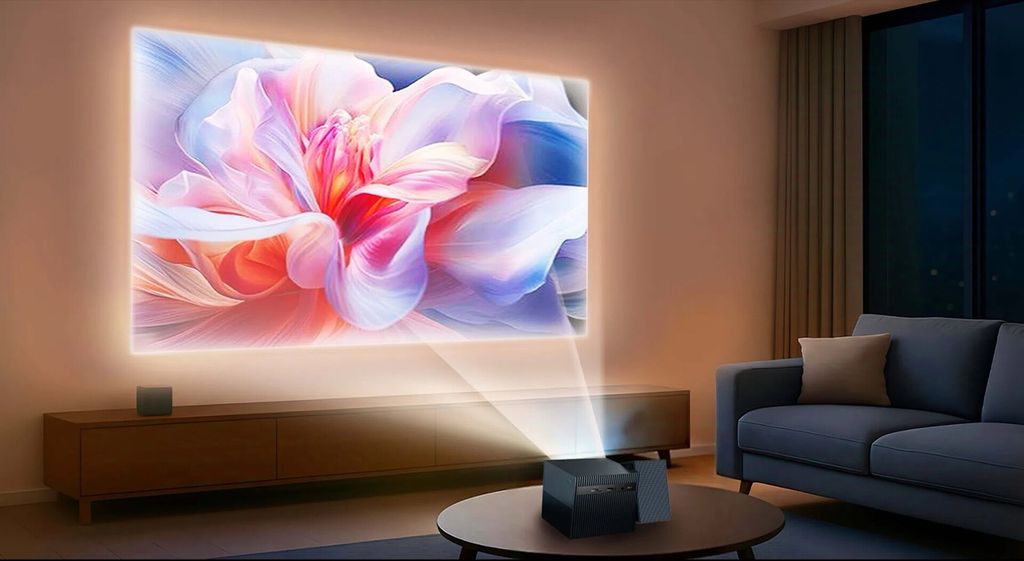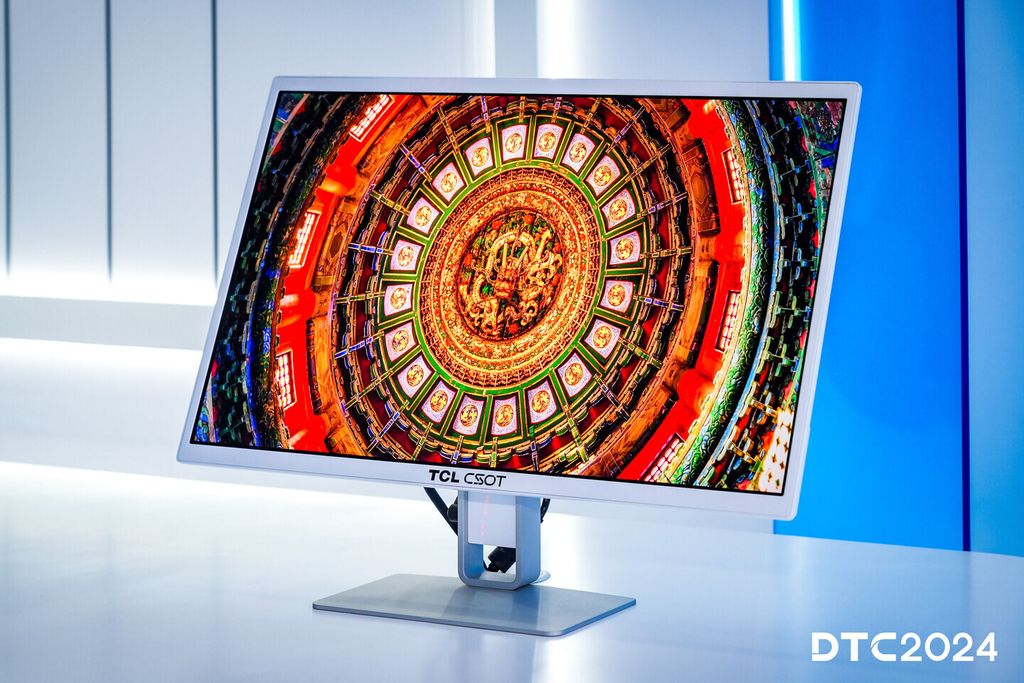- Matching (Score)
- Our verdict
- TV appearance
- Where to buy
- Contrast and black detail
- HDR effect quality
- Factory color reproduction
- Color reproduction after calibration
- Smoothness of tonal transitions
- Image scaling and smoothness of tonal transitions
- Blur and motion smoothness
- Console compatibility and gaming features
- Input lag
- Compatibility with PC
- Viewing angles
- Daytime performance
- TV features
- Apps
- Playing files from USB
- Sound
- Panel details
TCL C8K Review
C8K / QM8K
Available screen sizes:

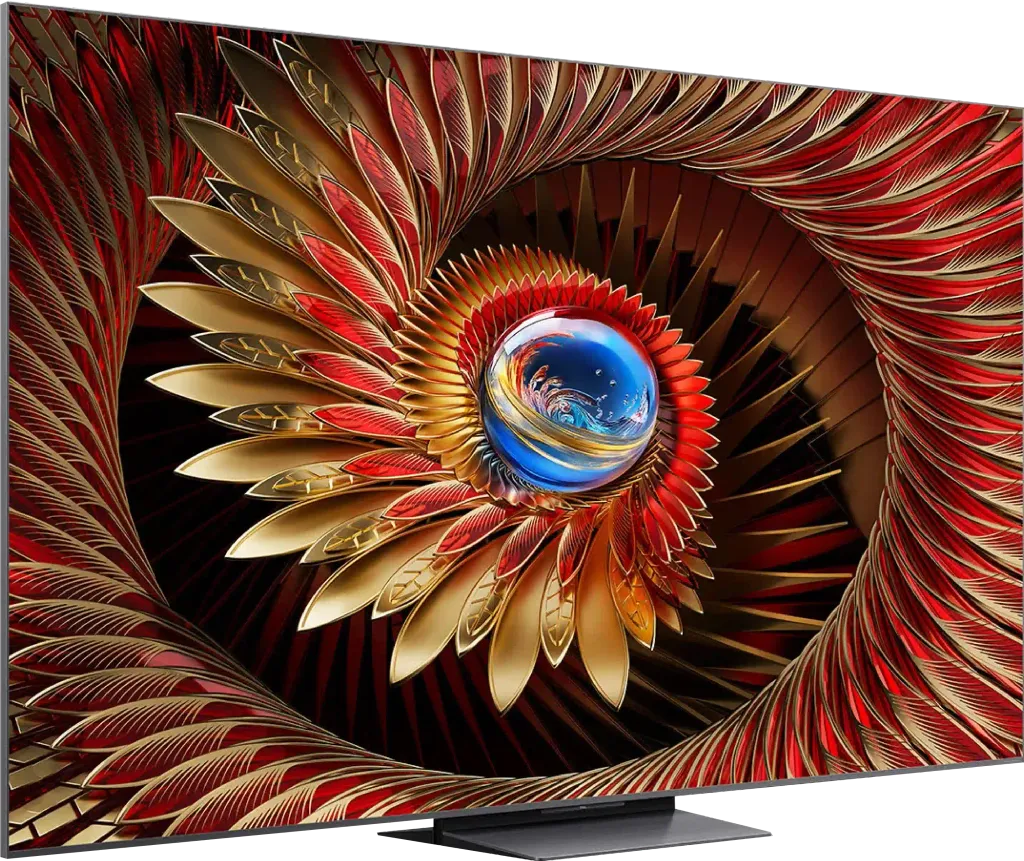
Complete the survey to find out the result
Panel type: LCD VA Refresh rate: 144Hz Brand: TCL Resolution: 3840x2160 System: Google TV Model year: 2025
TCL C8K is the direct successor to the C855 model, which amazed us last year with its excellent price-to-performance ratio. The new version introduces several key changes and improvements, and the manufacturer once again targets the higher-end segment of Mini-LEDs with a VA panel. Does the C8K manage to enhance what was already good? Are we still dealing with a pricing revelation? We check this in our test.
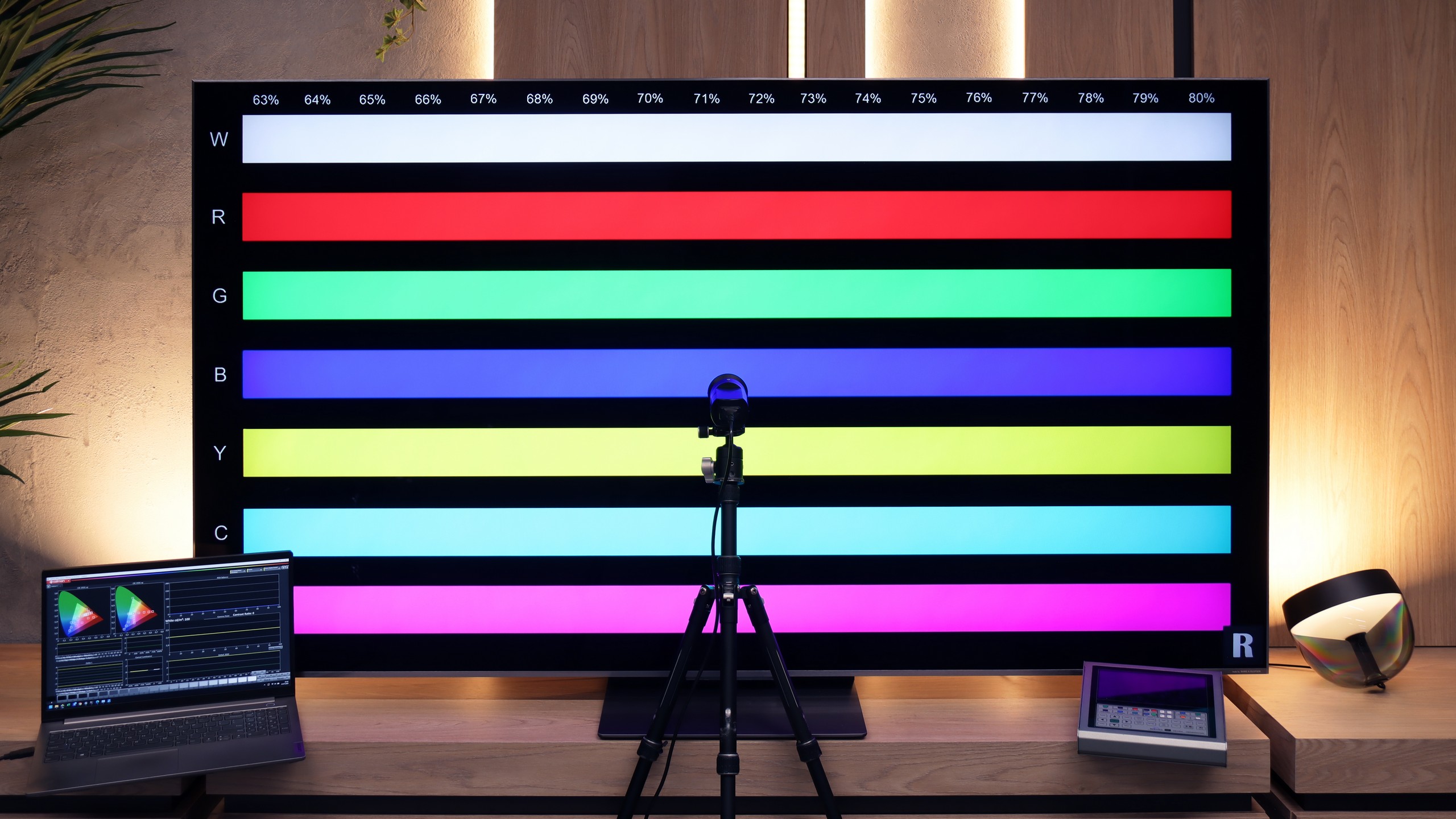
TCL C8K - Our verdict
7.7
Overall rating
The C8K is proof that premium Mini LED technology doesn't have to cost as much as a premium product. With a high number of dimming zones and a new WHVA panel, the television offers excellent contrast, deep blacks, and very high brightness – everything we expect from a good viewing experience in the living room. The improved viewing angles are also impressive, as they no longer detract from the enjoyment of watching when sitting outside the centre of the frame. The C8K also shines in the gaming world – with a 144 Hz refresh rate, support for 288 Hz in Full HD, a full set of gaming features, very low input lag, and sensible compatibility with PCs, it's hard to put down the controller or keyboard. It also comes with Google TV – currently the most advanced and versatile Smart TV platform. There is access to all the key apps, great voice control, and an intuitive interface. It may lack some classic TV features like USB recording from built-in tuners or picture-in-picture (PiP), but most users won't even notice that. On top of all this, the sound is quite decent – a new collaboration with Bang & Olufsen.
Of course, it's not a screen without its flaws. HDR, while impressive, still has some 'mini LED' traits – bright scenes can be overly bright or dimmed, and the system lacks a few classic features known from other brands. But when we consider its price in comparison to the competition, it's hard not to ask the question – why pay more?
Advantages
Great contrast and black levels
Very high HDR brightness
Support for all popular HDR formats
Fast 4K@144 Hz panel
Many features for gamers (VRR, ALLM, Game Bar, Low input lag)
GoogleTV operating system with many apps
Improved viewing angles thanks to WHVA panel
Very good sound: Collaboration with Bang & Olufsen
Disadvantages
No smaller variants, e.g. 55"
Very weak dimming algorithms
Colour reproduction out of the box needs improvement
Only 2 HDMI 2.1 ports and one USB.
No recording function from built-in tuners and PiP
Movies and series in UHD quality
7.4
Classic TV, YouTube
7.0
Sports broadcasts (TV and apps)
6.8
Gaming on console
8.9
TV as a computer monitor
8.6
Watching in bright light
6.9
Utility functions
7.7
Apps
9.6
Sound quality
7.9
Complete the survey to find out what fits your preferences
TCL C8K - TV appearance
HDMI inputs: 2 x HDMI 2.0, 2 x HDMI 2.1 (48Gbps) Outputs: Toslink (Optical audio), eARC (HDMI), ARC (HDMI) Network Interfaces: Wi-Fi 2.4GHz, Wi-Fi 5GHz, Ethernet (LAN) 100Mbps
Build quality: Premium
Stand type: Central
Bezel color: Graphite
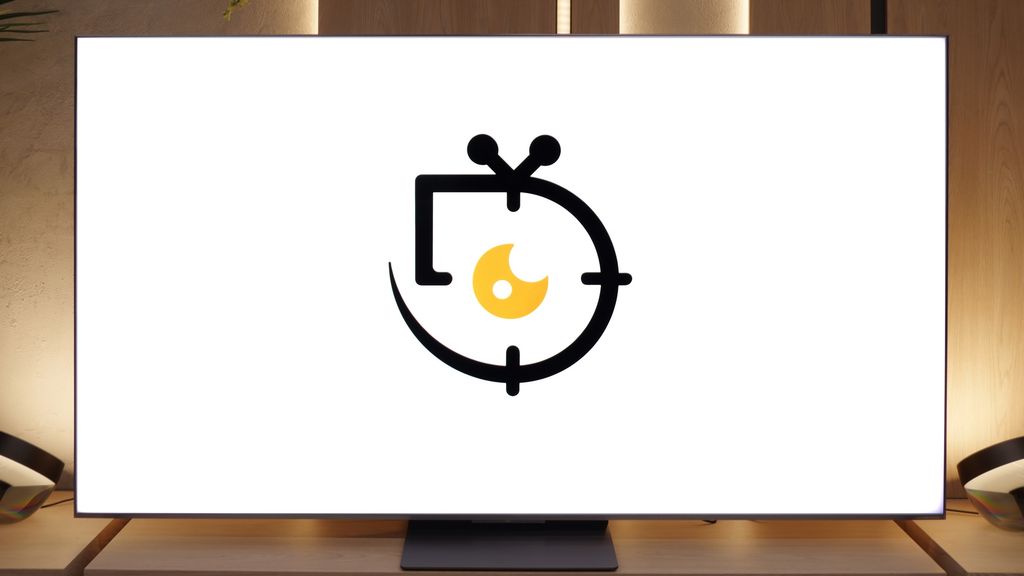
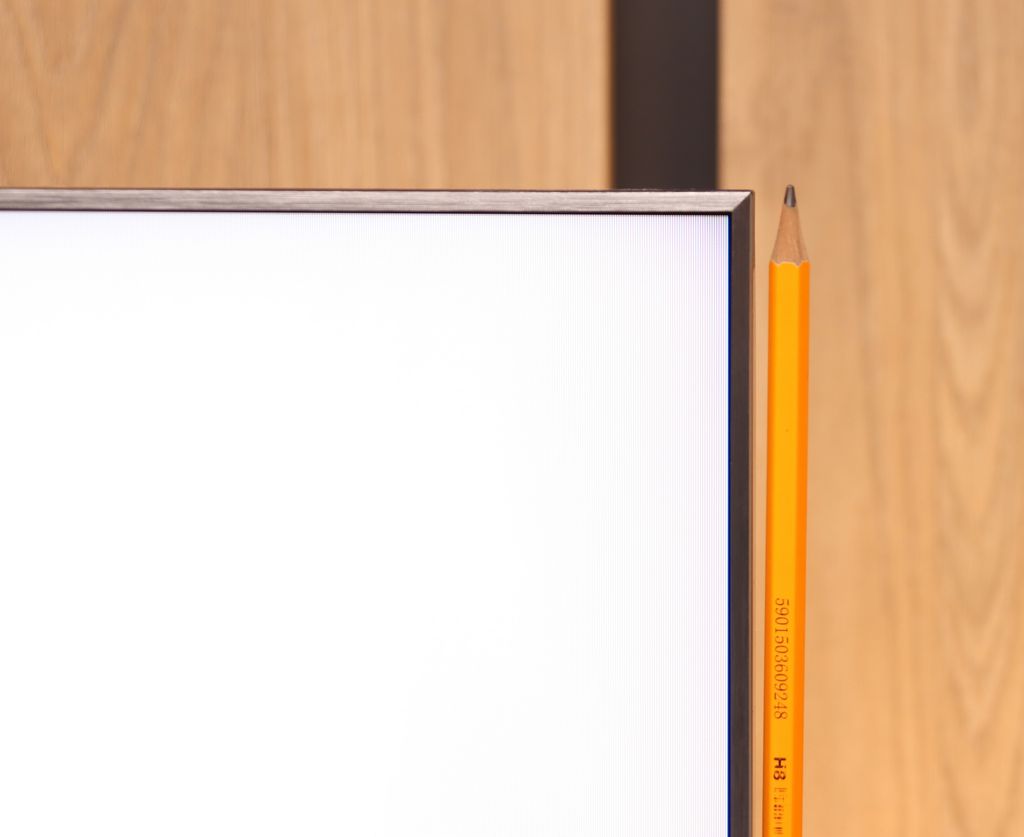
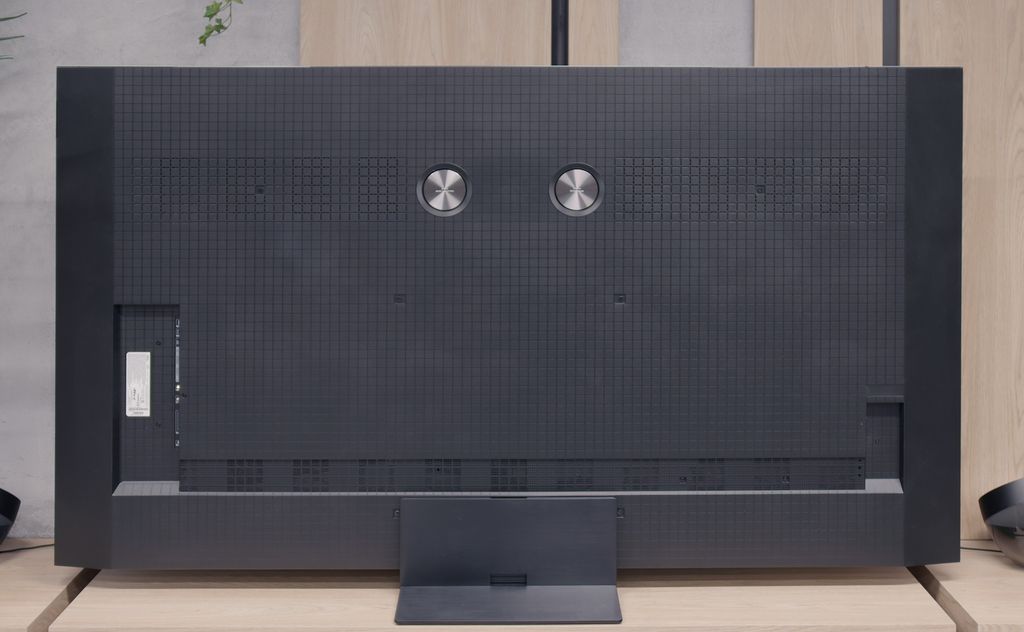
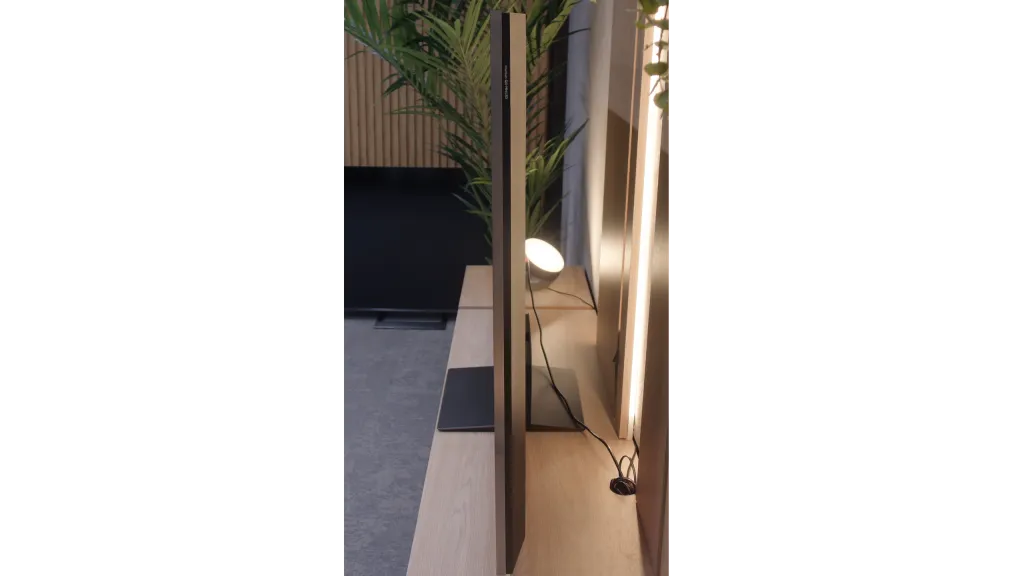
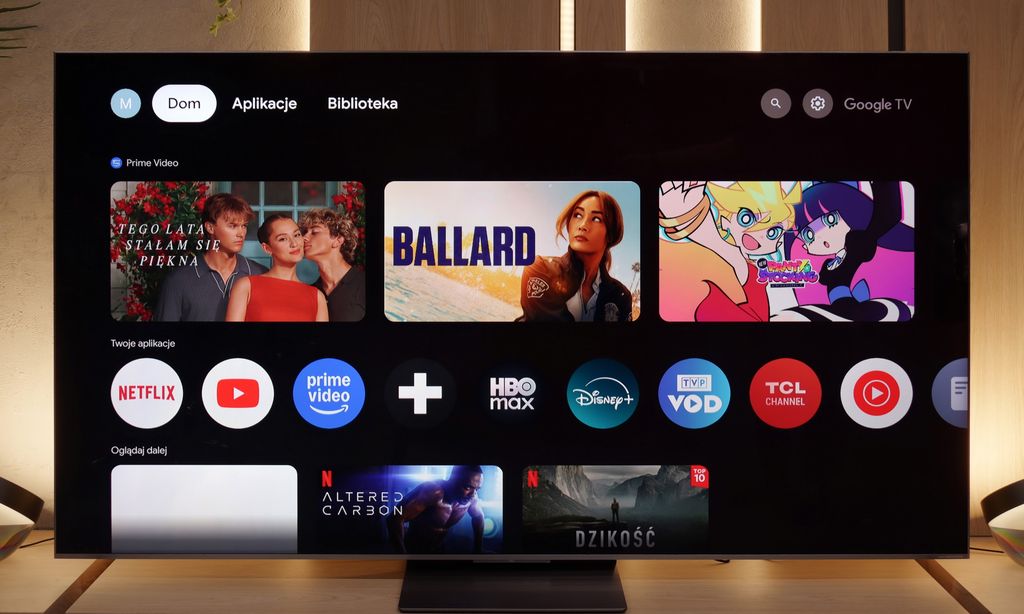
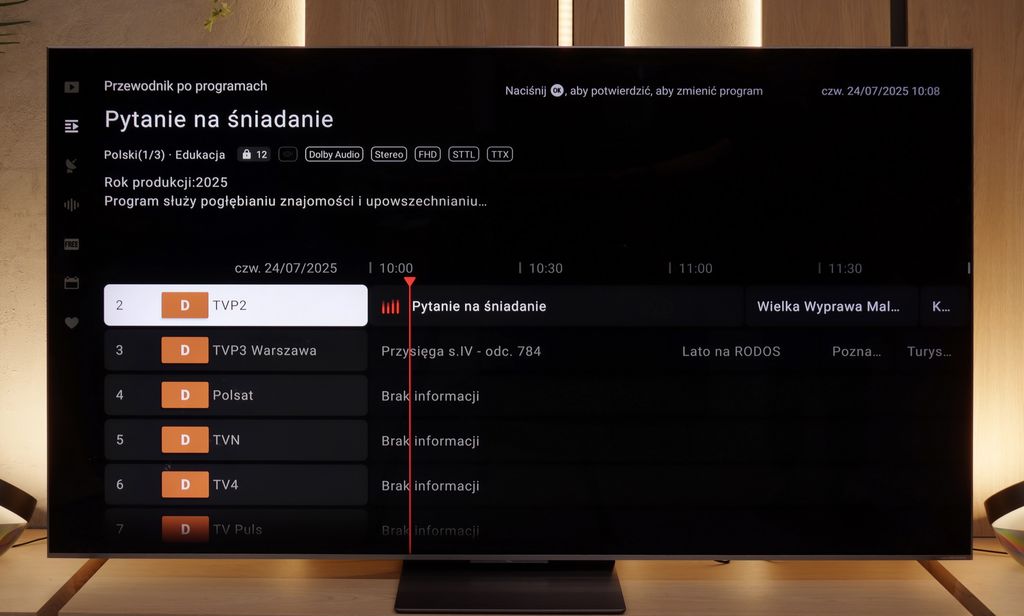
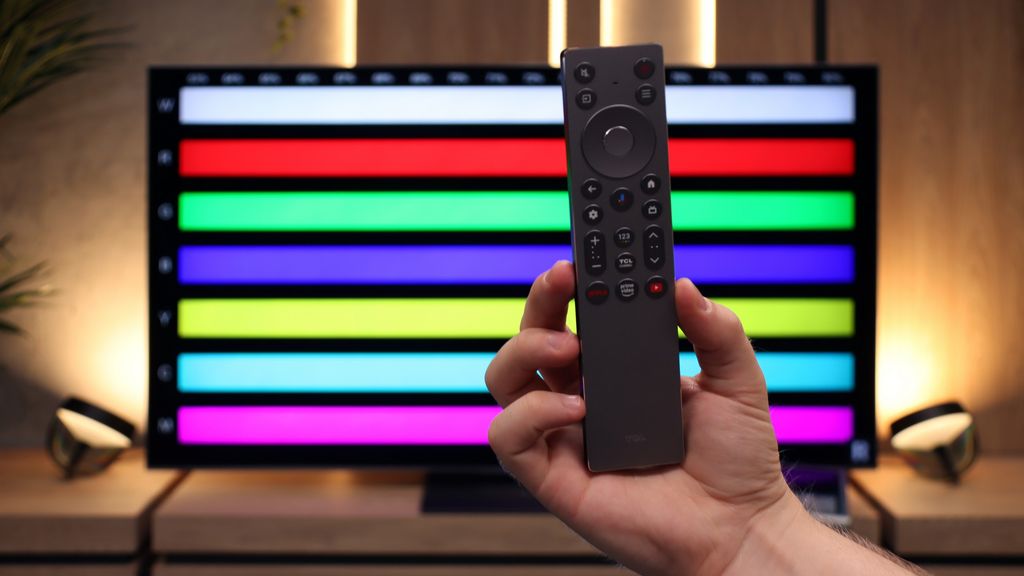
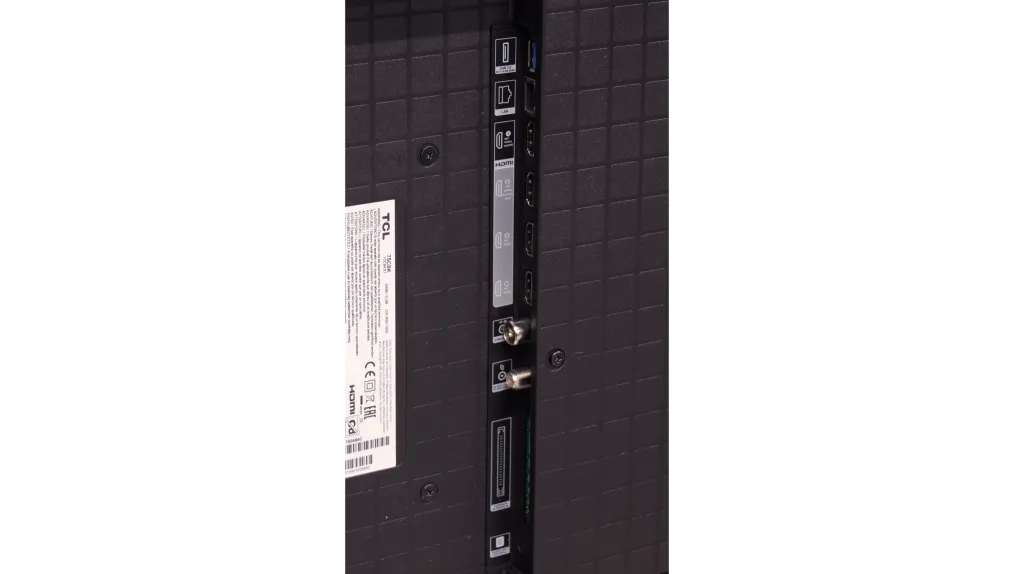
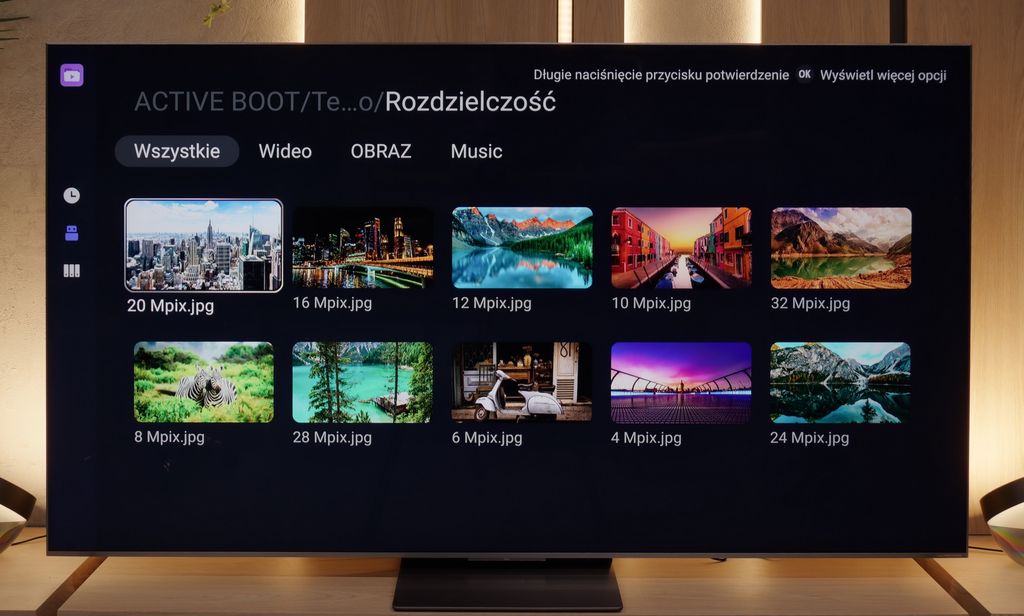
Stand: Fixed
Flat design: Yes
Accessories: Stand
The TCL C8K makes an impression of a high-end device right from the first contact. The bezels are extremely narrow and almost blend into the screen – there’s no characteristic black border that often "frames" the image. Instead, it creates an effect as if the content is simply spilling over the edges. It looks great – especially in larger sizes. The entire frame is made of aluminium, and the lower part is slightly thicker. Thankfully, this doesn’t disturb the proportions – it still looks sleek and modern. Importantly, the television is about 6 cm thick, but the design is completely flat. This means it can be mounted very close to the wall without any strange gaps or curves at the back. So, if someone dreams of a home "wall panel," this is definitely a device that allows for that. The package also includes a decent central stand. It’s sturdy enough to comfortably hold even the 85-inch version. And if you’re dreaming of a screen almost like in the cinema – that is, 98 inches – here the manufacturer opted for two classic spaced legs. And rightly so, because with such dimensions, stability is essential.
Buy at the best price
Select size:
TCL C8K - Contrast and black detail
8.2/10
Local dimming function: Yes, number of zones: 1680 (30 x 56)

Result
714,300:1

Result
68,100:1

Result
25,050:1

Result
17,800:1

Result
12,500:1
Visibility of details in the lights:
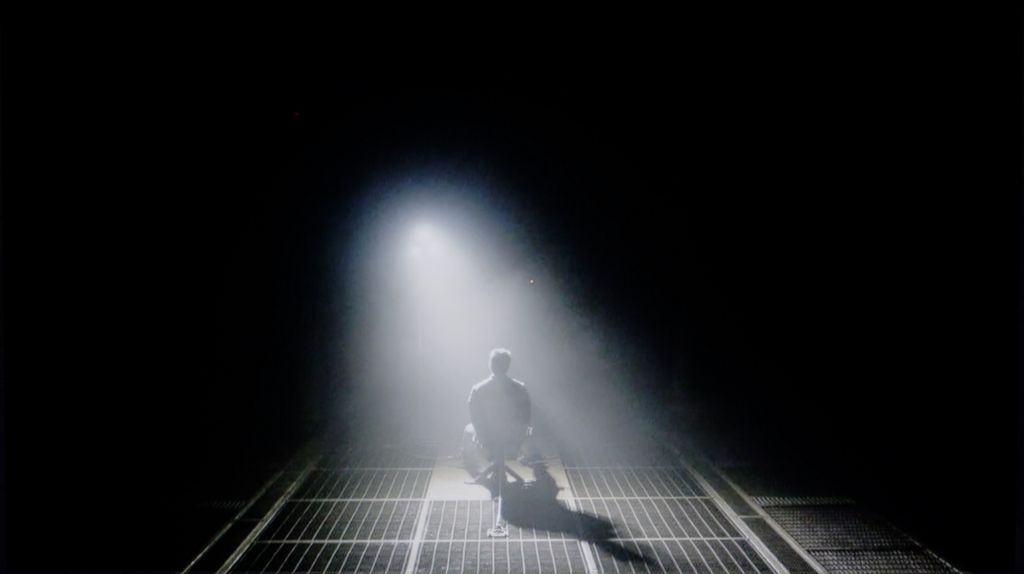
TCL C8K is a representative of the Mini LED class of TVs and – importantly – it uses a VA panel. This means high native contrast right from the start, but the true strength of this model reveals itself only when we combine it with an impressive number of dimming zones. In the 75-inch version we tested, we counted nearly 1700 independent zones – and you can feel it. In many scenes, the effect of black levels and contrast is nothing short of phenomenal. In less demanding scenes – where dimming algorithms don’t have to “work hard” – the screen can resemble OLEDs. The contrast can be nearly infinite, and the separation between bright and dark elements makes a fantastic impression.
However – as is often the case with Mini LEDs – this is not an organic screen, and some compromises have to be expected. Brightness is a huge asset, but it can also reveal the weaknesses of this solution – especially in dark scenes. Parts of very challenging scenes to display – such as those famous ones with a starry sky or sequences from the iconic Pioneer Kuro – become noticeable with what’s known as haloing, which is a glow around small bright details. Sometimes the whole screen also lightens slightly when the system tries to reconcile contrast with extreme luminance. However, this is a characteristic of the technology, not a flaw of a specific model. And although such compromises can somewhat diminish the final impression in certain scenes, TCL C8K is among the very best when it comes to contrast among Mini LED TVs.
Halo effect and black detail visibility:
TCL C8K - HDR effect quality
6.9/10
Supported formats: HDR10, HDR10+, Dolby Vision, Dolby Vision IQ, HLG Color gamut coverage: DCI P3: 96.7%, Bt.2020: 80.8%
Luminance measurements in HDR:

Result
1241 nit

Result
510 nit

Result
1180 nit

Result
375 nit

Result
1421 nit
TCL C8K is a really bright television. In synthetic conditions – that is, during tests with brightness charts – it was able to achieve even 3500 nits peak brightness in movie mode. That's an impressive result and brings the C8K close to the market leaders, at least when it comes to panel brightness. More importantly – these aren't just numbers on paper. In films with a lot of bright scenes, such as Life of Pi or The Meg, the brightness clearly exceeds 1000 nits, providing a true sense of HDR effect. The picture in those moments looks very dynamic, colors are saturated thanks to excellent coverage of the color palette, and the lights are – spot on and intense. Exactly how it should be.
However, this doesn’t mean that everything is perfect. Just like in contrast tests, here too, in more demanding scenes, compromises appear. In sequences with very fine light elements – such as stars in the night sky or reflections in dark rooms – the local dimming algorithm can… get confused. Instead of bringing those details up, the television sometimes decides to dim them significantly – down to around 300 nits – to maintain deep blacks. On one hand, this is quite a sensible approach (better deep black than a grey/navy blue screen), but on the other – there may be moments when certain elements of the picture become difficult to see or even disappear into darkness.
TEST UPDATE (20/08/2025): The brightness control algorithm in this model is quite problematic – attempting to calibrate the picture so that it doesn’t drastically overexpose the brightest scenes results in unnatural shifts: improvement in one part of the image results in deterioration in another. The television may achieve slightly higher readings in brightness measurements, but in practice, this comes with a heavily overexposed image that looks very unnatural!
For the record, we provide brightness values without this adjustment:
1463 nits
640 nits
1368 nits
468 nits
1025 nits
Scene from the movie “Pan” (about 2800 nits)

Scene from the movie “Billy Lynn” (about 1100 nits)

In cinematic scenes, the TCL C8K can truly shine. Literally. Take the film "Pan," for example – the entire setting bathed in sunlight looks very convincing, and the effect of the rising sun in the distance, against the sky, has been rendered almost perfectly. It also performed well in the scene with fireworks in "Billy Lynn's Long Halftime Walk" – the bright, dynamic elements appeared very realistic and made an impression. But… as we mentioned earlier, mini-LED has its own rules. In those same scenes – where dark figures appear in the background – the dimming algorithms were able to quite “absorb” the details. Actors standing in the shadows turned into unreadable silhouettes without expression. Perhaps the effect would be better if the television had a better-optimised dynamic tone mapping feature. The current implementation does improve the visibility of details in blacks, but does so at the expense of overall contrast – boosting the general brightness of the scene and flattening the image. Therefore, it is difficult to recommend its use.
Update (HDR – synthetic tests):
Brightness in synthetic measurements increased after the update; however, this has practically no bearing on real film conditions. In everyday use, the image still seems oversaturated and unnatural, so the improvement in the tables doesn’t indicate an actual enhancement in quality.
For the record, here are the results before the update:
Window 2% – 1832 nits
Window 5% – 1963 nits
Window 10% – 1881 nits
Window 15% – 1727 nits
Window 20% – 1604 nits
Window 25% – 1475 nits
Window 50% – 1067 nits
Window 75% – 818 nits
Window 100% – 675 nits
HDR luminance chart:
HDR luminance
TCL C8K supports a truly wide range of HDR formats. Of course, we have the standard HDR10 – which consists of static metadata found in practically every TV on the market – but also a full set of dynamic formats: HDR10+ and Dolby Vision. While it may seem that a bright TV like the C8K doesn't need support for dynamic metadata, reality shows something different. In very bright, demanding scenes – such as summer outdoor shots, explosions, or fireworks – Dolby Vision can significantly enhance the clarity of the image. Details set against bright skies or explosions are simply more visible. The same TV, the same scene, but using different metadata can produce a completely different final effect. Dolby Vision extracts more information from the darker parts of the image without simultaneously blowing out the bright areas, yielding an effect closer to what the director intended to showcase. This demonstrates that even with high panel brightness, dynamic tone mapping still makes sense.
Static HDR10

Dynamic: Dolby Vision

Factory color reproduction
4.8/10
In the C8K, a new picture mode has appeared: Filmmaker Mode. This is something we've known for years from televisions of other brands – a mode designed to deliver the director's vision as faithfully as possible, without unnecessary image enhancements. Unfortunately, at TCL, it seems to still be in the "to be refined" stage. Right from the first glance, the screen appears too warm – the image veers into reds, which may not appeal to everyone. The white balance was markedly skewed – the screen looked distinctly warm, and the red colour dominated almost every scene. There was a lack of blue, which led to an unpleasant yellowing and distortion of the image. But that’s not all. Regardless of whether we were watching regular TV, YouTube, or HDR films – the television had a clear tendency to excessively brighten the image. In tests of gamma curves and EOTF, the lines strayed instead of adhering to the standard, resulting in an overly bright and less contrasting image. Additionally, in colour reproduction tests, significant deviations were noticeable – on the colour wheel, some points were actually "drifting away." It must be said plainly: Filmmaker Mode in the C8K, in its current form, is not very cinematic.
Color reproduction after calibration
7/10
After professional calibration, the TCL C8K has made a huge leap forward. In SDR content, the white balance has been almost perfectly set – the screen has finally stopped being too warm and has taken on a neutral character. The gamma curve, which is responsible for how brightness is represented, now looks very good – the image is more coherent and realistic. In HDR content, we also improved the white balance – within the limits of what the television itself allows. Unfortunately, the C8K still interprets brightness management a bit "in its own way." When we look at the EOTF chart in films, it’s clear that the television brightens entire scenes more than it should. Before calibration, this effect was quite bothersome – now the situation is much better, although it still falls a bit short of perfection. This, however, is a limitation of the device itself, which – despite our efforts – does not allow us to fully tame its nature.


TCL C8K - Smoothness of tonal transitions
8.7/10
In this regard, the TCL C8K performs really well. The transitions between colours look natural and cohesive – there are no strange bands or strong banding that could disrupt the viewing experience. Especially in bright scenes, everything looks very smooth. In the darkest parts of the image, particularly in shades of grey, you might occasionally notice slight inconsistencies, but they are subtle enough that they shouldn't bother anyone.








Image scaling and smoothness of tonal transitions
5.5/10
Smooth transition function
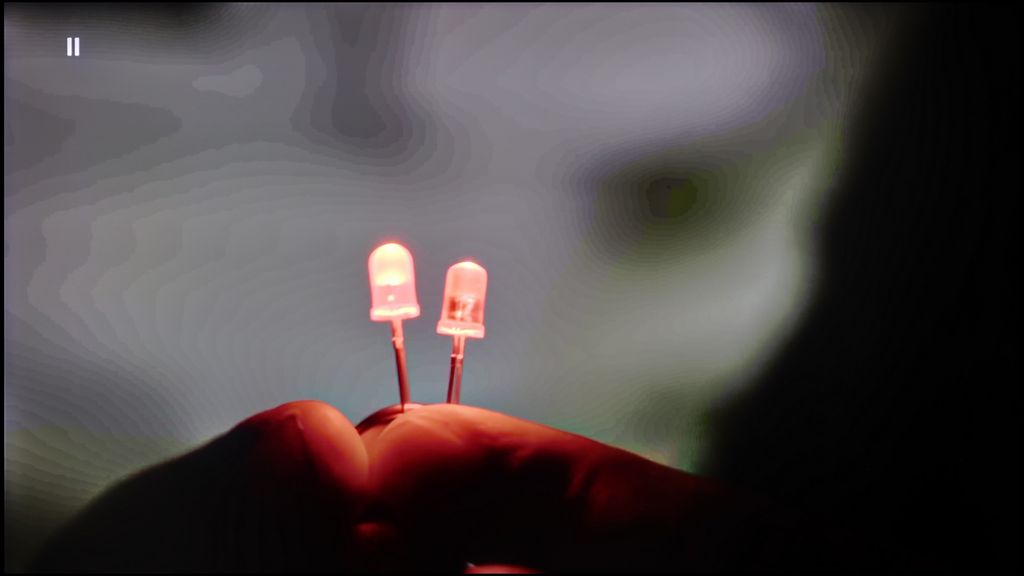
Image without overscan on the SD signal

How does the TCL C8K handle lower quality materials? One could say: fairly well, though without much enthusiasm. The television offers a tonal transition enhancement feature designed to smooth out unwanted gradients. In practice, there's a slight improvement visible, but it's not at a level that eliminates all imperfections. The feature subtly softens harsh transitions, but it doesn't work miracles. Film grain isn't completely suppressed, and subtle banding on grey backgrounds can still be noticeable. But maybe that's for the best? – at least the image doesn't lose its texture or depth, as is often the case with televisions that overdo digital processing. When it comes to upscaling, which is enhancing picture quality from lower resolutions, the C8K performs quite well. The image is sharp, and details – though sometimes a bit softened – remain discernible. However, it's not on par with the best picture processors from the competition. On the plus side, there's no issues with overscan, which is the artificial cropping of the image that can still surprise in some models from other brands.
TCL C8K - Blur and motion smoothness
7.8/10
Maximum refresh rate of the panel: 144Hz
Film motion smoothing option: Yes
Blur reduction option: Yes
BFI function 60Hz: Yes, 120Hz (double contours)
BFI function 120Hz: Yes, 240Hz (double contours)
Brightness drop with BFI: 51%
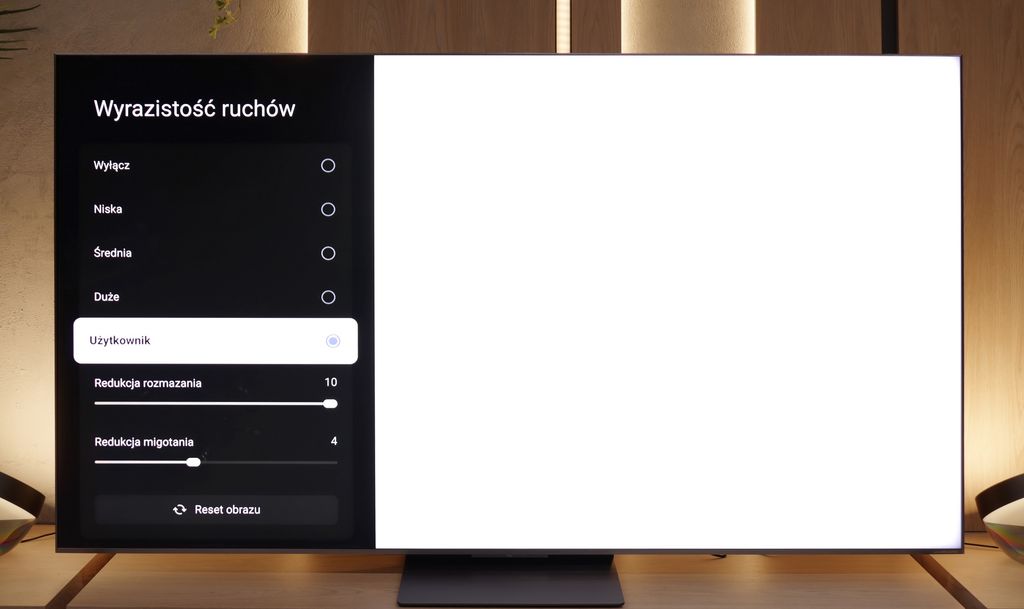
If you're planning a weekend with the Champions League or a marathon of F1 racing – the TCL C8K won't let you down. The television is equipped with a 144 Hz panel, so it should inherently handle fast motion well. And indeed – it performs very well. The fluidity of motion is at a very good level here, and the "Motion Clarity" feature with two sliders (blur reduction and flicker reduction) allows you to easily adjust the effect to your own preferences. Want to slightly smooth things out – no worries. Prefer a cinematic look – no problem.
Blur (native resolution, maximum refresh rate):



Blur (BFI function enabled):



Blur (288HZ 1080p):



There are also positives when it comes to the smearing. Sure, it's not OLED level, but... let’s be honest – there’s not much beyond OLED. Nevertheless, the TCL C8K keeps the contours of our Alien under control. The image in motion remains sharp and clear, even during dynamic scenes. Gamers and sports fans should be pleased – whether you’re watching sport or playing games on Xbox/PS5. And for those who want to get the most out of the panel – we even have a 288 Hz mode at Full HD resolution for PC. Yes, that’s a bit of a geeky curiosity, but it shows one thing: TCL really takes motion seriously. And you can see it – quite literally.
TCL C8K - Console compatibility and gaming features
9.8/10
ALLM: Yes
VRR: Yes
VRR range: 48 - 288Hz
Dolby Vision Game Mode: Yes
Correct implementation of HGIG: Yes
1080p@120Hz: Yes
1440p@120Hz: Yes
4K@120Hz: Yes
Game bar: Yes
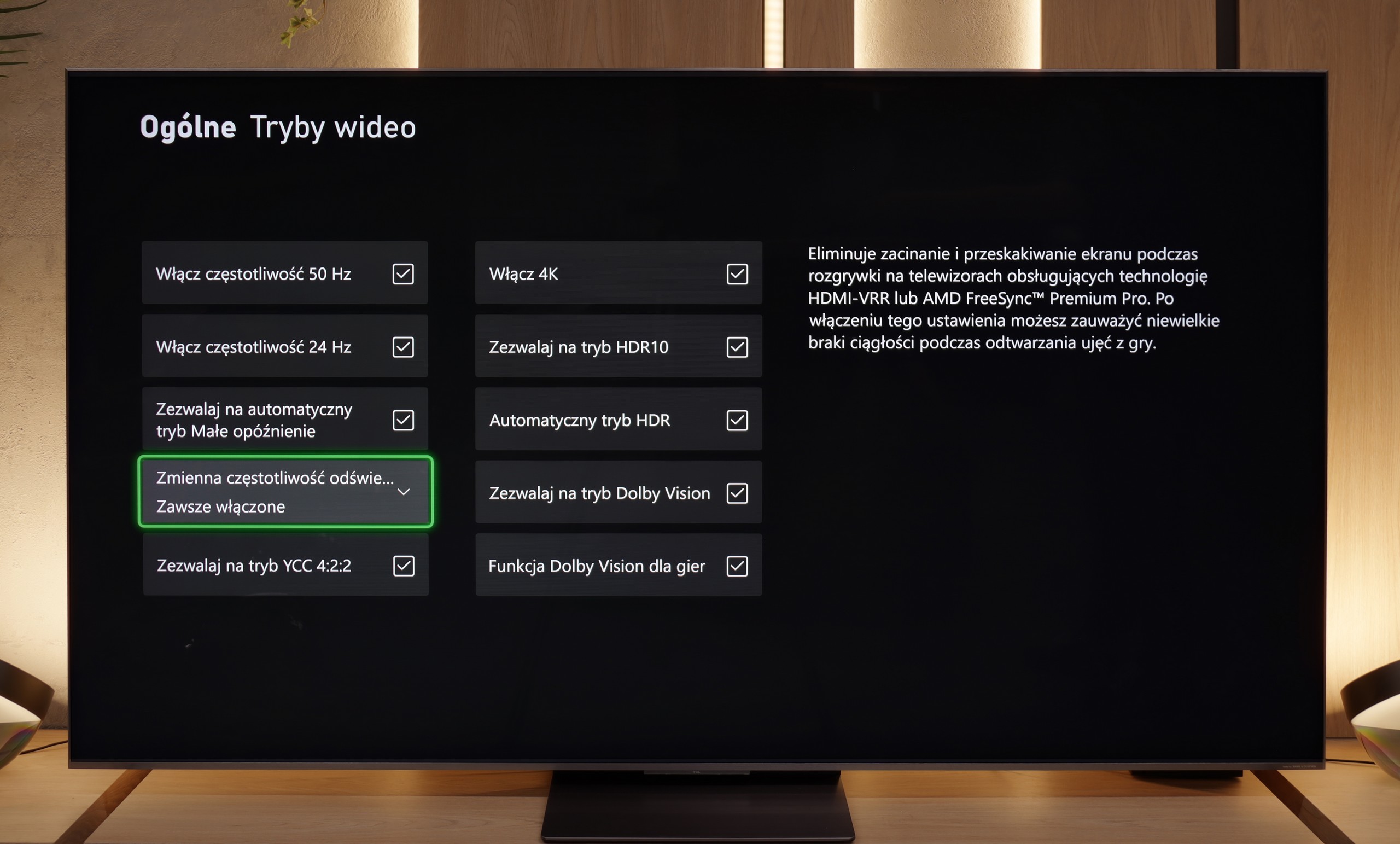
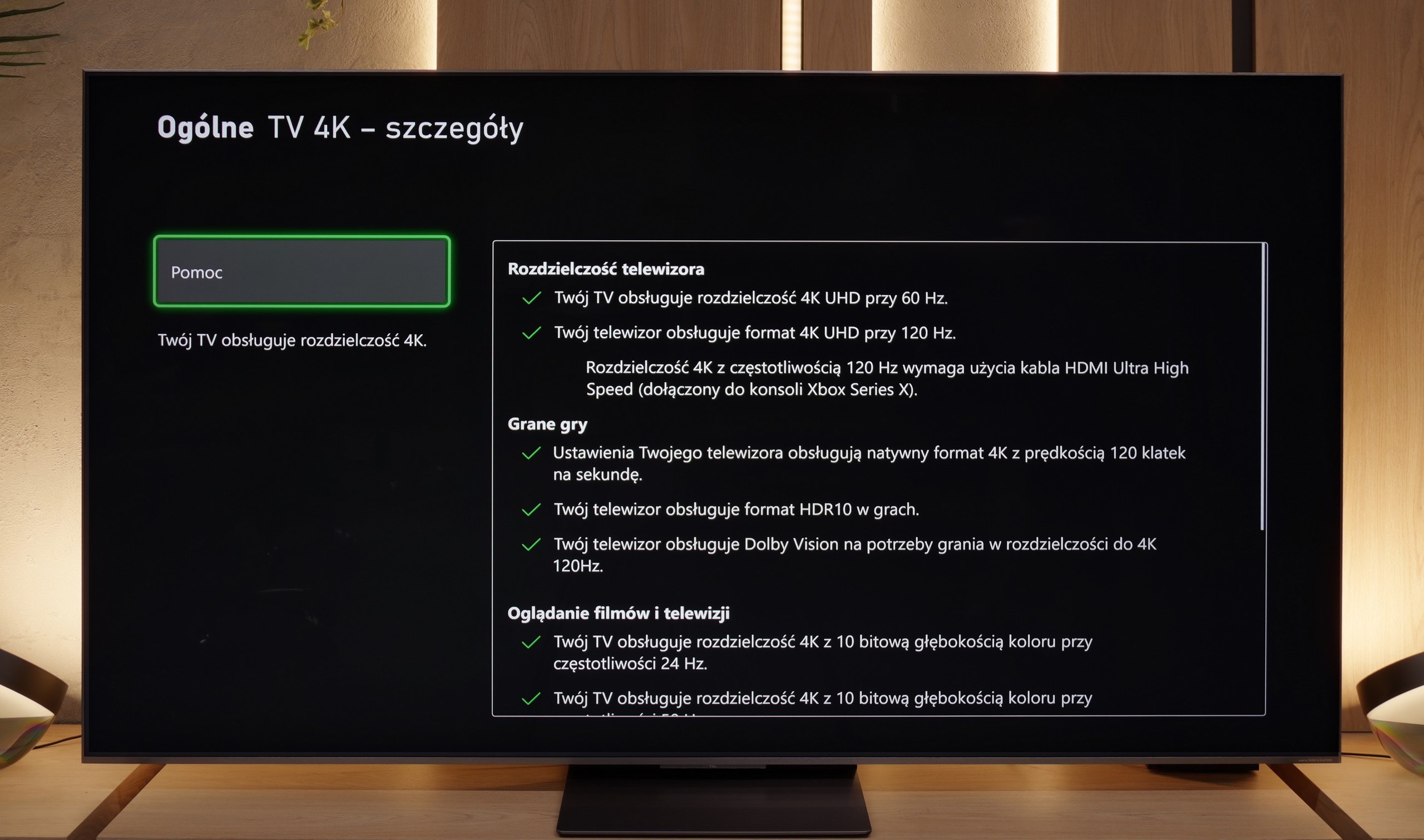
TCL C8K offers practically everything we could expect from a screen for gamers. It has variable refresh rate (VRR), automatic game mode (ALLM), Dolby Vision in games, and a well-functioning implementation of HGiG, which helps preserve the creators' intent in HDR titles. The TV also supports 120 Hz in lower resolutions without any problems, and it can even display a staggering 288 Hz in Full HD – a figure that will surely appeal to fans of dynamic shooters and sports games on PC.
On board, we also find the GameBar – a graphical interface that somewhat resembles an elongated Nintendo Switch console. Thanks to this, we gain quick access to information about the current game mode, frame count, HDR format, and other little details that really make life easier for the gamer. We obviously couldn’t resist and ran a couple of races in Forza Horizon on the C8K – and we must admit, it looked and worked really well.
However, there is a slight drawback – in such a fast and clearly gaming-oriented device, it's a bit unfortunate that the manufacturer opted for the implementation of only two HDMI 2.1 ports. For some users, who use several next-gen consoles and, for example, a soundbar with eARC, this could be a limitation that’s hard to overcome.
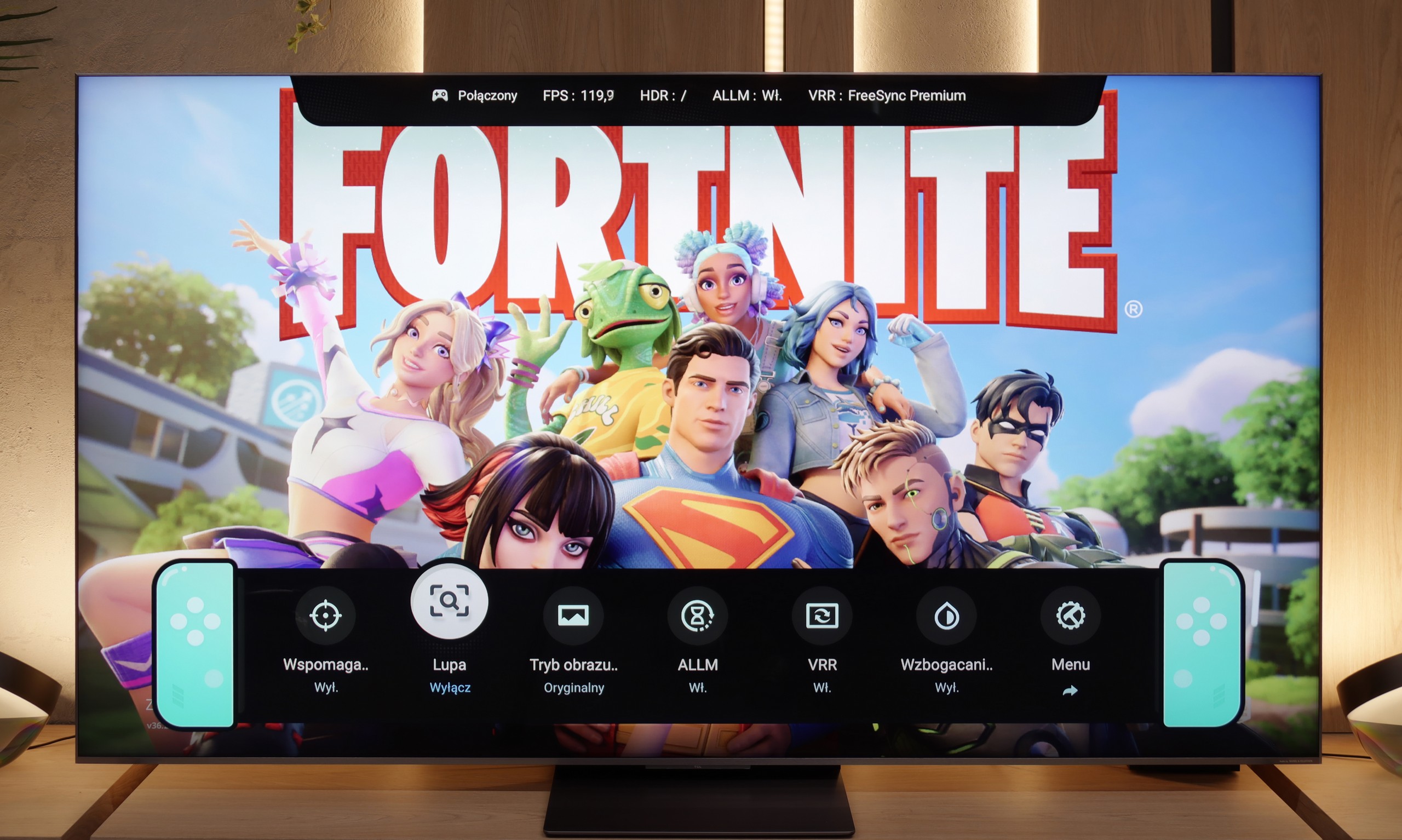
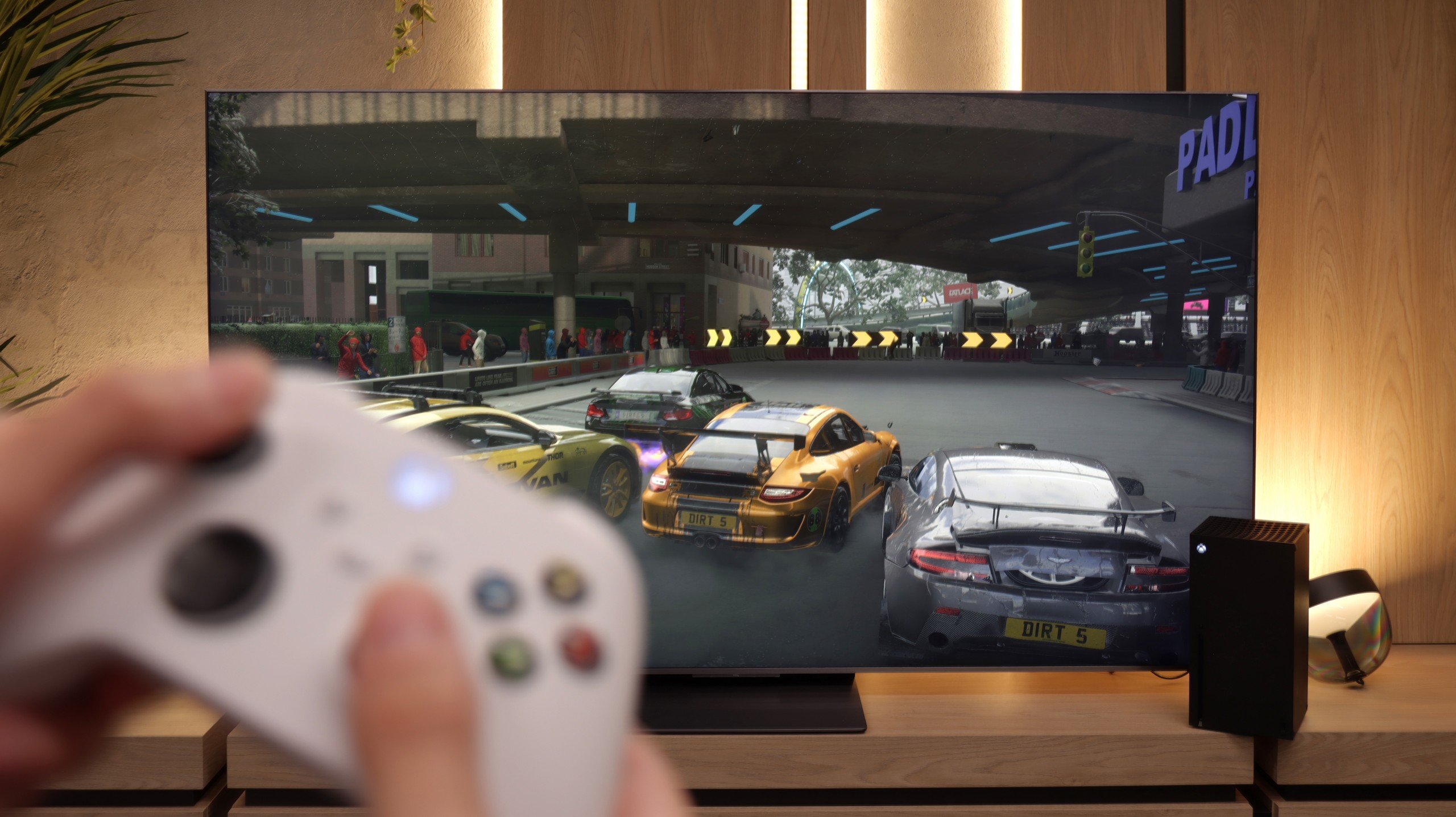

TCL C8K - Input lag
9.9/10
In terms of delays, the TCL C8K pleasantly surprised us. Whether we were playing in 4K at 60 Hz, 120 Hz, or even in Full HD with Dolby Vision – the input lag remained at a very low level. This is a rare sight, as many TVs lose their advantage here, especially with more demanding Dolby Vision GAMING picture settings.
| SDR | HDR | Dolby Vision |
|---|---|---|
| 1080p60: 15 ms | 2160p60: 15 ms | 2160p60 DV: 15 ms |
| 1080p120: 7 ms | 2160p120: 7 ms | 2160p120 DV: 7 ms |
| 2160p60: 15 ms | ||
| 2160p120: 7 ms |

TCL C8K - Compatibility with PC
8.6/10
Chroma 444 (maximum resolution and refresh rate): Yes
Font clarity: Good
Readability of dark text and shapes: Good
Input lag in PC mode (4K, maximum refresh rate): 6ms
Matrix subpixel arrangement: RGB
Max refresh rate: 144Hz
G-Sync: Yes
As we mentioned before, the C8K is a TV designed with gamers in mind – and not just console gamers. Connecting a PC is an absolute joy. The low input lag is practically unnoticeable, and the 4K panel at 144 Hz (or even 288 Hz in Full HD) makes gameplay exceptionally smooth. It's equipment that's really hard to pull away from when we connect a keyboard and mouse.
It also performs well for office work or everyday computer use. Fonts – regardless of size – are clear and sharp thanks to Chroma 444. However, we have a small note: with very thin horizontal lines, you can see slight imperfections. We assume that very few will notice this because, after all, hardly anyone plans to place the smallest 65-inch monster 50 cm from their face and use it like a regular monitor.
TCL C8K - Viewing angles
4.5/10
Brightness drop at an angle of 45 degrees: 80%
One of the innovations in this year's TCL series is the WHVA panel, which has finally made a step forward in terms of viewing angles for the Chinese manufacturer. And while you can't completely cheat physics – brightness does indeed drop noticeably when viewed from the side – the image itself remains clear and doesn’t drastically lose colours or contrast. This is a significant change, as VA panels typically fall short compared to IPS panels in this category. Meanwhile, in the C8K, it’s clear that TCL has made an effort so that even a viewer sitting a little to the side can still enjoy the full image – something that everyone who doesn't sit "right in the perfect middle of the sofa" will appreciate.
TCL C8K - Daytime performance
6.9/10
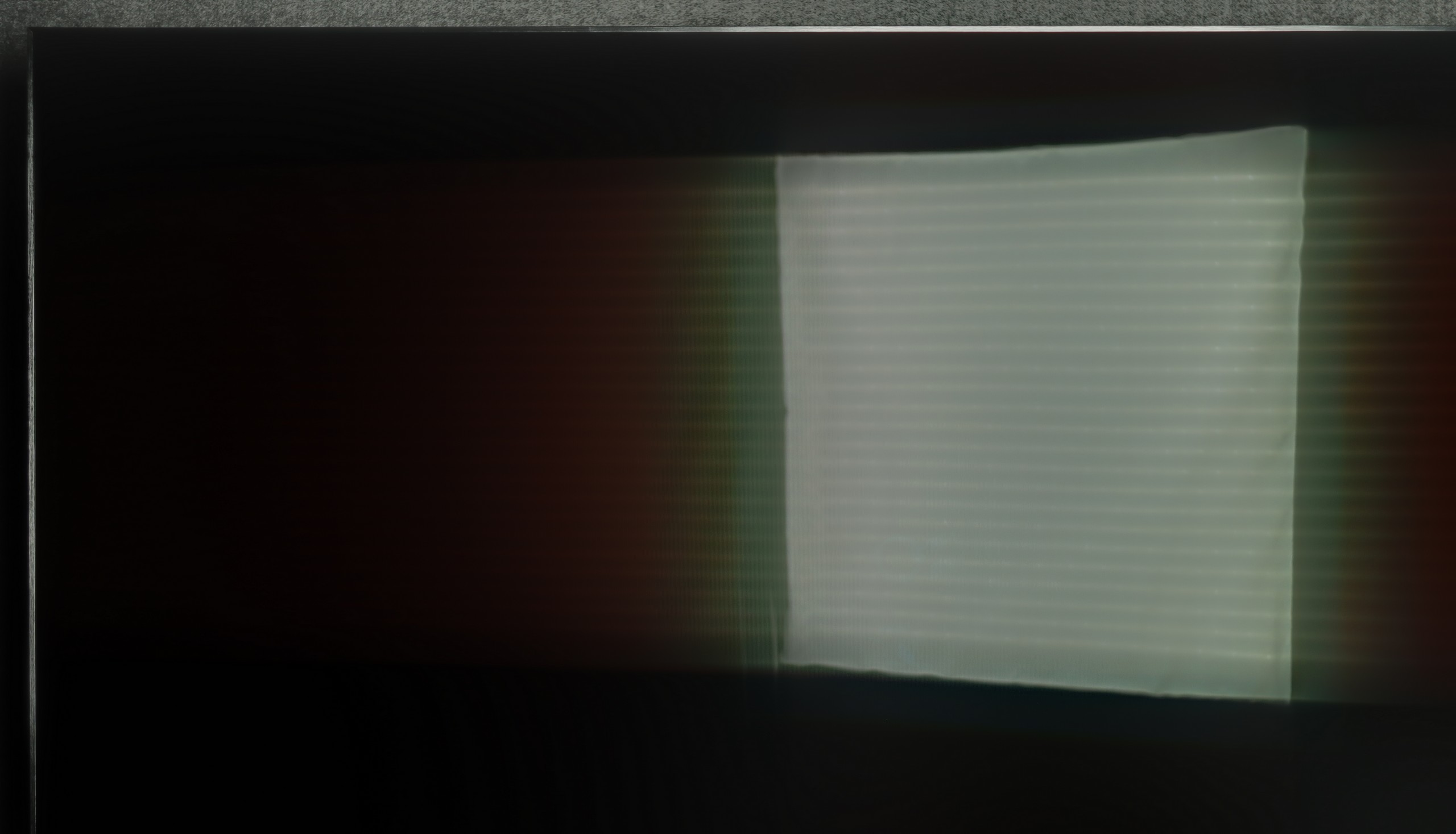

Panel finish: Glare
Reflection suppression: Decent
Black levels during daytime: Very Good
C8K is a really bright performer, and not just in theory. In SDR content, it can reach an impressive 700 nits, which translates to very good image readability even in brightly lit rooms. So if you have a bright living room with large windows – this TV won’t have much of a problem. However, it’s worth mentioning one little detail: the WHVA panel used here with improved viewing angles causes light reflections to be more diffused to the sides. In practice, this means that, for example, wall sconces or floor lamps directly opposite the screen may reflect in a slightly more extensive way than in typical glossy/satin panels.
Panel brightness
Average luminance SDR
TCL C8K: 613 cd/m2
TCL C8K - TV features
7.7/10
System: Google TV
System performance: Good
- HDMI inputs: 2 x HDMI 2.0, 2 x HDMI 2.1 48Gbps
- Outputs: Toslink (Optical audio), eARC (HDMI), ARC (HDMI)
- Network Interfaces: Wi-Fi 2.4GHz, Wi-Fi 5GHz, Ethernet (LAN) 100Mbps
- TV reception: DVB-T, DVB-T2, DVB-S, DVB-S2, DVB-C
Classic features:
Recording to USB (terrestrial TV): No
Recording programming: No
Picture in Picture (PiP): No
RF remote control (no need to aim at the screen): RF
Backlit remote control: Yes
Teletext: Yes
Audio only mode: Yes
Bluetooth headphones support: Yes
Simultaneous Bluetooth headphones & TV audio: Yes
Smart features:
AirPlay: Yes
Screen mirroring (Windows Miracast): Yes
Voice search: Yes
Voice search in native language: Yes
Ability to connect a keyboard and mouse: Yes








Classic TV Features
TCL C8K offers the vast majority of features that we consider essential today. It has a classic and clear program guide (EPG), teletext functionality, and connecting a keyboard, mouse, or Bluetooth headphones was no problem at all. It's a bit of a shame that the Google TV system – like many other TCL models – lacks more advanced options such as program recording or picture-in-picture (PiP) functionality. For some users, this could be a downside, especially if they are used to these options with other manufacturers. There can also be some concerns about the number of USB ports – there is only one. However, in practice, most people will find this sufficient to connect a drive with movies or a USB stick.
Smart Features
While the classic TV features are not the strong suit of the C8K, when it comes to smart features, this TV really shows its claws. The Google TV system used is the largest and most popular platform on the market – and it shows at every turn. The availability of apps is phenomenal. Netflix, YouTube, Disney+, HBO Max, Amazon Prime – you can find all of these here without the slightest problem. Only really niche or closed ecosystems (e.g. Apple Music) may not be available. The built-in voice assistant works very efficiently – you can ask it to change the channel, launch an app, search for a movie, or check the weather. The system responds naturally and quickly, providing a genuine sense of convenience and modernity. This is where the C8K definitely outpaces much of the competition – after all, that’s why we have smart TVs, to do more than just display an image.
Sound connection options
HDMI audio:
Other audio outputs:
Toslink: Yes
Wireless audio:
Bluetooth: Yes
Supported audio formats (external HDMI eARC audio):
Dolby Digital Plus 7.1: Yes
Dolby True HD 7.1: No
Dolby Atmos in Dolby Digital Plus (JOC): Yes
Dolby Atmos in Dolby True HD: No
DTS:X in DTS-HD MA: Yes
DTS-HD Master Audio: Yes
Senior accessibility
Numeric keyboard on TV: No
Font size adjustment: No
Audio description: Yes
TCL C8K - Apps
9.6/10























TCL C8K - Playing files from USB
9.2/10

| Maximum photo resolution: | Supported photo formats: |
|---|---|
We weren't expecting miracles, but... we got more than we anticipated. The TCL C8K handled most of the files we threw at it on the USB stick without issue. Movies in MKV, older AVI, audio tracks in DTS or AC3 – everything worked without a hitch. If we had to nitpick, it would be the usual complaint about the lack of support for the HEIC format from Apple devices, but that's a standard shortfall that one can live with. The most important thing, however, is that if someone is missing something, they can simply... install a better player. And this is where the advantage of Google TV is felt.
TCL C8K - Sound
7.9/10
77dB
Maximum volume
Supported codecs
(TV speakers)
Dolby Digital Plus 7.1
Dolby True HD 7.1
Dolby Atmos in Dolby Digital Plus (JOC)
Dolby Atmos in Dolby True HD
DTS:X in DTS-HD MA
DTS-HD Master Audio
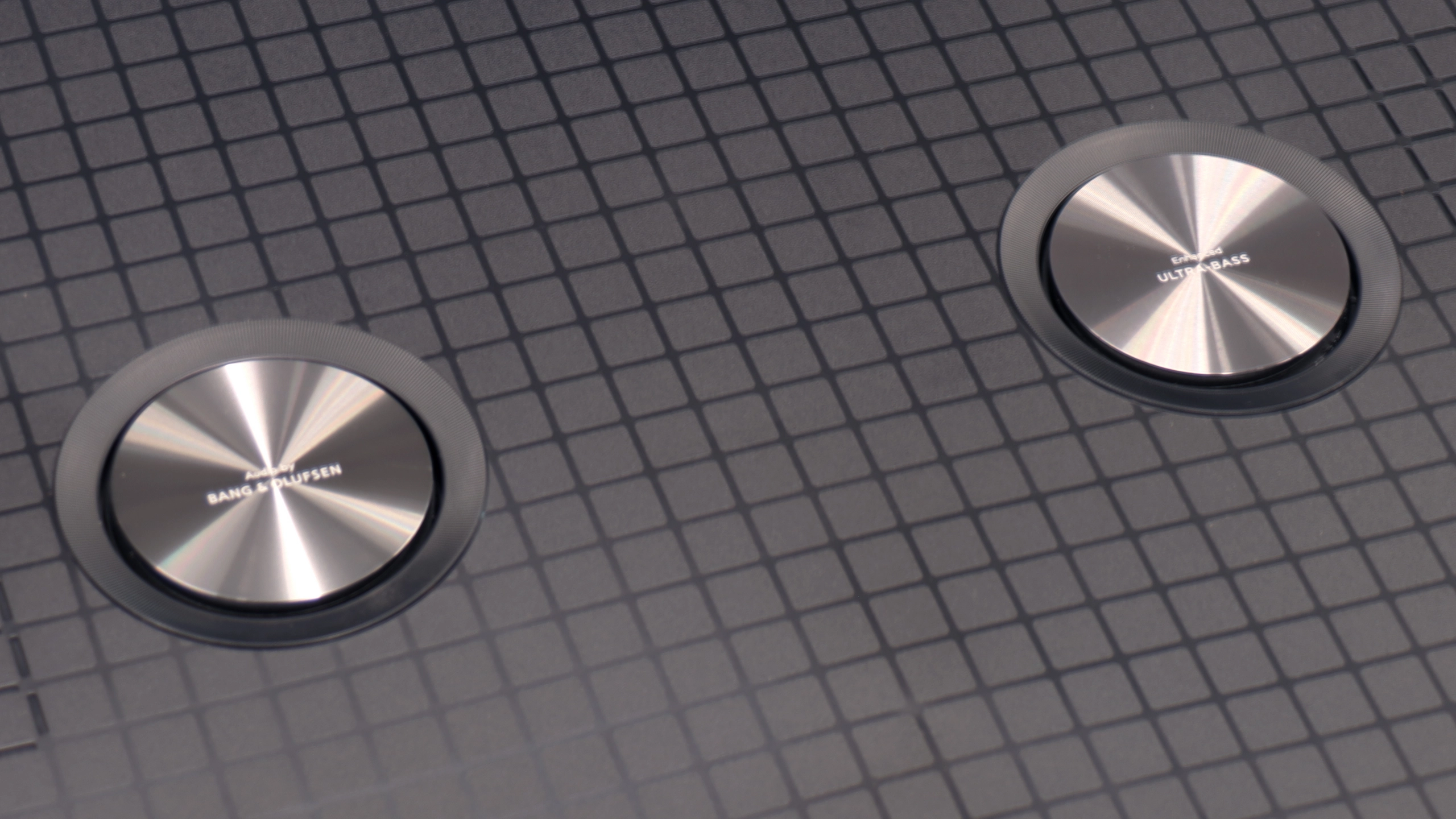
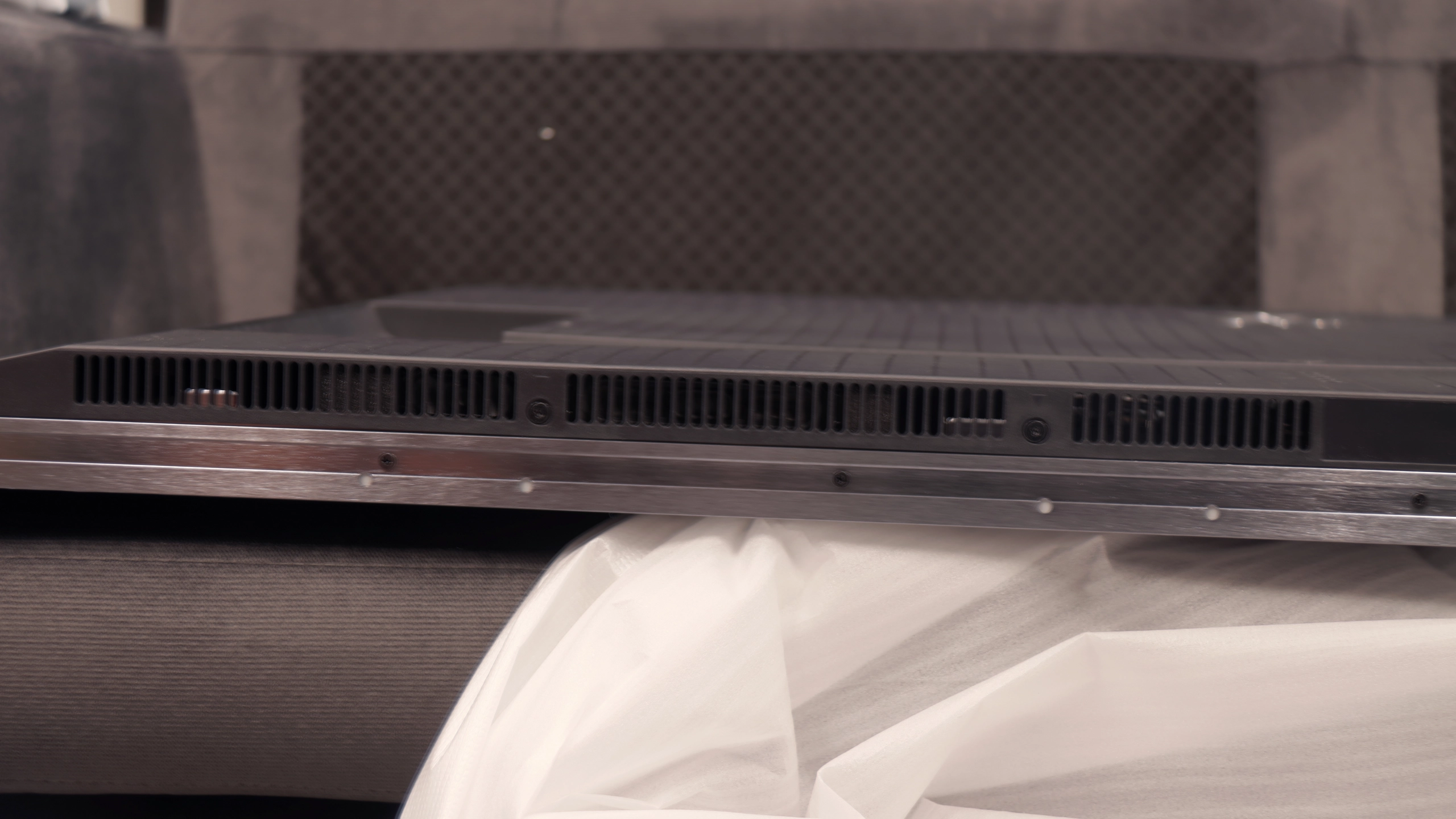
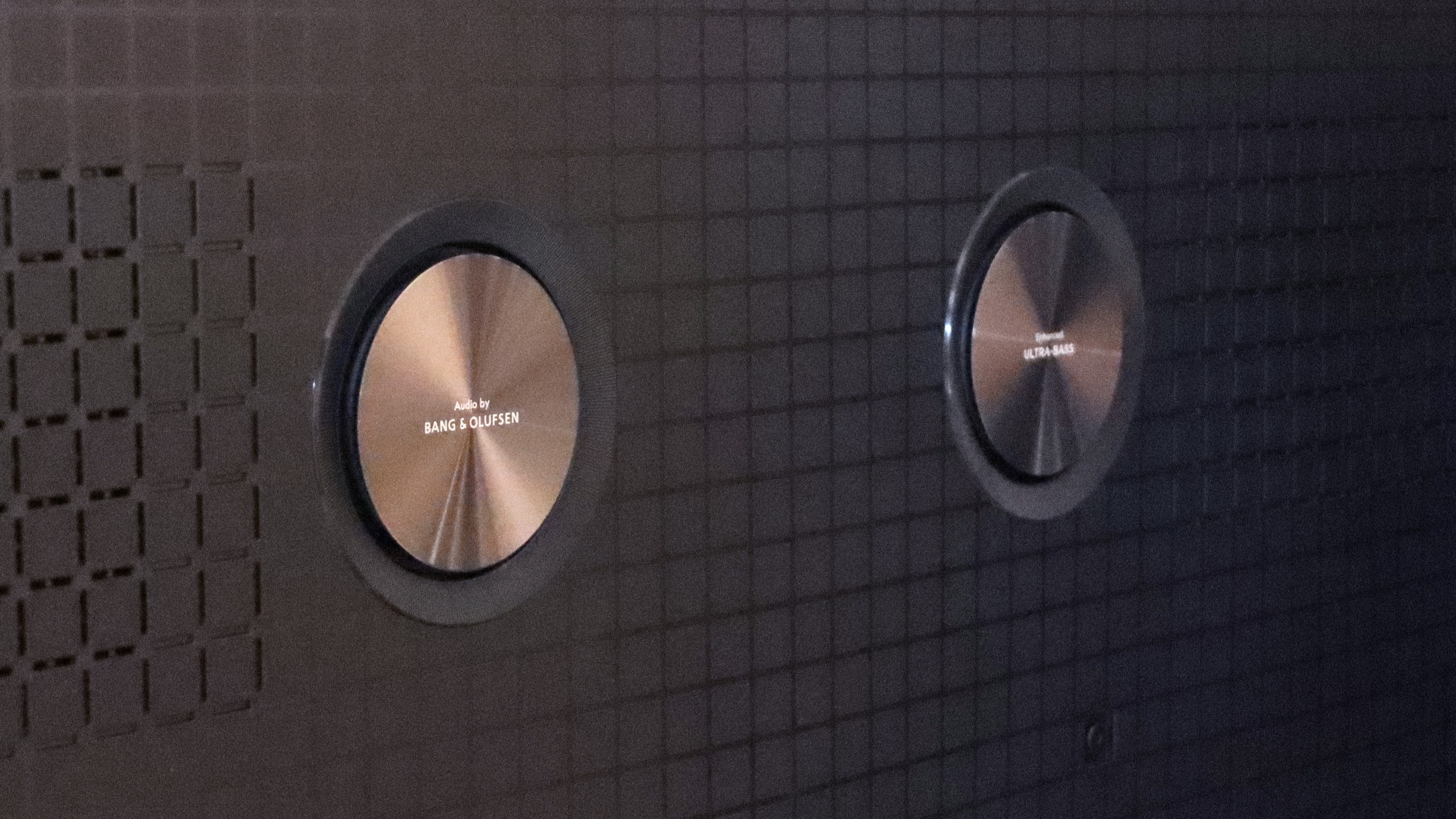



In terms of sound, we usually don’t have high expectations. After all, a TV isn’t a Hi-Fi system. But... the C8K positively surprised us. A new feature in the latest top models from TCL is the collaboration with Bang & Olufsen, and – most importantly – you can really hear that it’s not just a marketing gimmick. After just a few minutes with the TV, it was clear that it sounds different than a typical “flat screen”. The sound is full with a slight but noticeable bass. Of course, we’re still talking about sound from the television, so it won’t compete with the cheapest soundbar with a subwoofer, but for the standards of built-in speakers – it's very good.
*During loudness tests, we noticed unusual behaviour from the audio system. When the slider was set to 100%, the TV reached about 76–78 dB, but you could tell it was trying to generate more power, after which the volume level was immediately corrected to the mentioned value. On the other hand, when we lowered the volume to about 70%, it initially dropped as expected, but then slowly rose back to the same level of 76 dB. This effect gives the impression of an aggressive limiter at work, which, regardless of the position of the slider, always brings the volume back to one level. We checked this behaviour several times, and in every case, the result was identical – no additional “smart” volume adjustment or AI functions were activated.
Sound Quality Test:
Acoustic Measurements
77dBC (Max)
75dBC
TCL C8K - Panel details
Software version during testing: V8-0012T01-LF1V531.002396
Image processor: 4x ARM Cortex-A73 @1390MHz
Subpixel Structure:
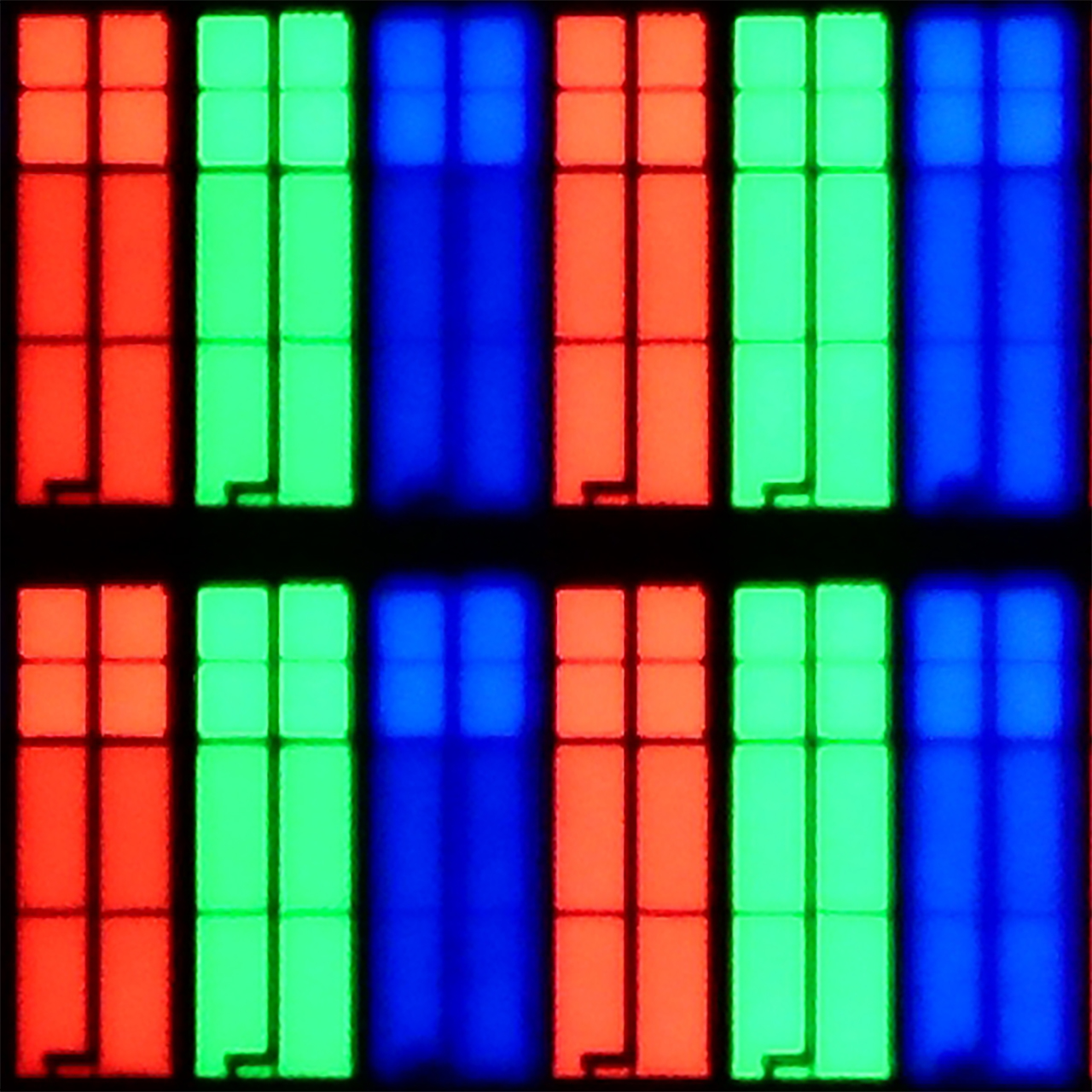
Panel uniformity and thermal imaging:
Backlight Type: Mini-LED QLED

Founder and originator of the "ChooseTV" portal

Journalist, reviewer, and columnist for the "ChooseTV" portal
See articles related to TCL C8K:
5/13/2025







